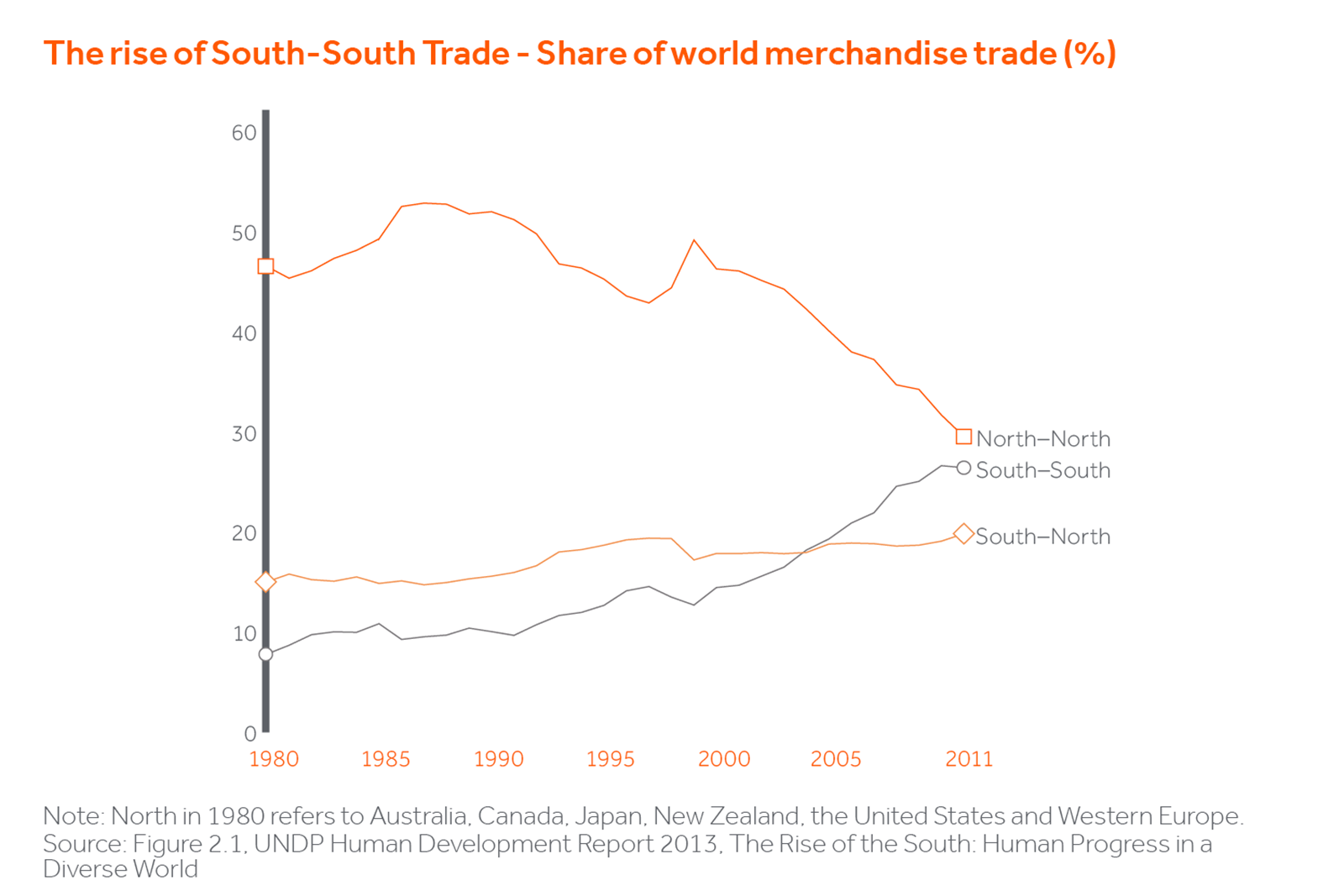What if a single place seemed to have it all?
Terrain spanning from deep Amazonic rainforests to dune-laden desert landscapes, snow-capped mountain ranges to pristine Caribbean beaches. Long-winding coastlines and bustling ports on two major oceans. Accelerated GDP growth making it the fastest growing market in its region since the turn of the millennium. A young population of 100 million ranking amongst the most educated across all emerging economies. Deep capital markets, investment grade credit rating and more free-trade agreements than any other market in its vicinity. Well…it exists. And yet, challenges (and opportunities) still lie ahead for it.
Chile, Peru and Colombia, home of the rugged Andes Mountains and commonly referred to as the “Andean Three”, are increasingly looked at as a single bloc from a geopolitical and investment destination perspective. The assimilation has as much to do with what they share in common, as with how they contrast against their neighbours. After the Latin America debt crisis of the 1980s, the Andean economies branded themselves as poster-children for orthodox economic policy, strong institutions and stable bi-partisan rule. In contrast, Venezuela, Ecuador, Bolivia and Argentina went the route of more questionable policy choices, resulting in little growth and prosperity for their populations over the past fifteen years. This “us vs. them” dynamic reinforced the regional integration storyline and created a bipolar, yet conveniently peaceful, contrast between both groups of countries.
The story is by no means the same across the three markets. Chile stands out by having the highest GDP per capita in region (comparable to Poland’s), an OECD club seat, a sustained and steady growth trend, and a life expectancy higher than that of Germany. Peru and Colombia are more similar economies, earlier in their development lifecycle, while still among the wealthier in Latin America from a GDP per capita perspective. They have young populations which have recently undergone a massive shift, becoming first-time consumers as part of an emerging middle class (over a third of the region’s population rose from poverty between 1990 and 2015).
So why are these markets attractive to us? The starting point is a rock-steady base of institutions and a focused and deliberate policy orientation. Chile was the reform pioneer starting in the 1980s, with an agenda aimed at liberalising the economy, fostering private investment and controlling inflation (then, a major issue for most Latin American countries). Most notable were the establishment of an independent central bank, a pension system overhaul and a step towards privatisation of major state-owned sectors. Chile was the front-runner in energy sector reform in the region. Its reform established the sector framework prevalent in most of the Latin American markets our Energy fund invests in today. Based on the UK model, the reform instituted transparent regulatory bodies and unbundled sector monopolies to effectively attract private investment (Chile´s electricity sector is 100% privately owned today). Nearly a decade later, Colombia and Peru followed with similarly broad-based and aggressive reform agendas. Given their later start and years of domestic conflict with Shining Path and FARC, there is a natural catch-up for Colombia and Peru over a pathway well-trod by Chile in the 1980’s and 1990’s.

Despite sustained periods of high growth since the implementation of reforms, all three countries have kept inflation in check and maintained relatively stable free-floating currencies through well-managed and independent central banks. High rates of domestic contractual savings and the resultant natural bid for domestic assets have helped smooth relative FX volatility along this path, which is great news for a long term investor. All three markets are highly coveted as private investment destinations, being the second FDI receptors in the region. They benefit from investment-grade ratings, Chile having had one for two decades.
In light of this common ground, the Andean Three have been increasingly promoting regional integration. The recently-signed Pacific Alliance Trade Agreement significantly reduces tariff duties and trade restrictions between the three countries (plus Mexico) and plays a crucial role in expanding trade links to Asia. They also created MILA, a program that seeks to integrate the three countries’ stock-exchanges, creating the second largest bourse by market capitalisation in Latin America after Brazil’s BOVESPA.
The private sector, too, is an important integrating force. Yearly cross-border merger and acquisition activity within the bloc rose over three-fold from 2003-2006 to 2010-2015. Transaction activity has centered on industries such as financial services, consumer-retail and energy, all key sectors for Actis and where we currently hold or are pursuing investments in the region. CorpBanca and BCP, two of Chile and Peru´s leading commercial banks, completed major acquisitions in Colombia in the past five years. Grupo Sura, a Colombian asset management conglomerate, acquired pension operations in Chile and Peru in the same period. Falabella and Ripley, Chile´s retail giants, have expanded aggressively across Peru and Colombia over the past decade. Energy players EEB/ISA, Colbun and IC Power, from Colombia, Chile and Peru respectively, have come to play a leading role in each of the Andean economy’s power grids.
The Andean markets continue to make strides in the right direction. Last year the Colombian Government signed a peace accord with FARC, ending a 60 year civil conflict. Researchers estimate this could boost medium-term GDP growth by up to 200 bps. However, challenges still lie ahead for the trio. After a sustained high-growth period from 2000-2015 (briefly interrupted by the 2008 financial crisis), the Andean economies have hit a slower patch, with growth estimated at between 1.5–2.5% in 2017. Oil-producing Colombia and mining-centric Chile and Peru were affected by the commodities downturn in 2015, and underwent relevant current account adjustments and currency devaluations. This was compounded by a strong El Nino phenomenon which caused major flooding and impacted inflation in Peru and Colombia. Oil, copper and gold will continue to play a significant role in the Andean economies (with Chile particularly well placed for the electric vehicle revolution with its significant lithium deposits in the Atacama) but major external adjustments have now been absorbed. This setback has re-focused policymaker efforts to the right areas: tax reforms and productivity-enhancing infrastructure investment. The three economies have swiftly undergone an adjustment phase and are poised to rebound during 2018.
Looking into the near-future, politics are in focus, with elections in Chile in 2017 and Colombia in 2018. Chile’s race is currently led by center-right ex-President and industrialist Sebastian Pinera, while Colombia’s candidacy list is still being populated. Both electorates hold high hopes around a political transition, eager to see the dynamism of the past decades re-injected into their economies. Hopefully, the recipients of that mandate realise that they nearly have it all in order to deliver.






